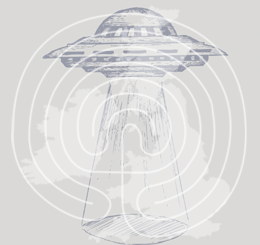Scareships or Motherships : The British phantom airship scare 1909 – 1918
At the turn of the 20th century, visionaries began to dream that the new science of aeronautics would bring universal peace on the Earth by love or fear. Love because as people travelled more they would get to know each other as human beings and no longer as sinister foreigners; fear, because the destructive power of aerial bombardment would render war unthinkable. In 1908, just before the airship scare hit Britain, a London newspaper had serialised H.G. Wells’ novel The War in the Air, which depicted airships laying waste to New York with bombs dropped from the sky.
 The popular reaction was far less idealistic. As aviation moved from the being a promise to being a reality, the skies became ominous, filled with menaces. Mysterious enemy aircraft and airships were being seen everywhere. These outbreaks were called the scareship panics. These waves began in the 1890’s, with outbreaks in Britain, New Zealand and the United States. At first there was quite a distinction between the reportage in Britain and New Zealand, where the scareships were interpreted as German. In America, the wide Atlantic and hopes of neutrality managed to keep the sense of
The popular reaction was far less idealistic. As aviation moved from the being a promise to being a reality, the skies became ominous, filled with menaces. Mysterious enemy aircraft and airships were being seen everywhere. These outbreaks were called the scareship panics. These waves began in the 1890’s, with outbreaks in Britain, New Zealand and the United States. At first there was quite a distinction between the reportage in Britain and New Zealand, where the scareships were interpreted as German. In America, the wide Atlantic and hopes of neutrality managed to keep the sense of
oppression at bay.
Fortean researcher Mike Dash has commented on these sightings:
“Not only were [the Mystery Airships] bigger, faster and more robust than anything then produced by the aviators of the world; they seemed to be able to fly enormous distances, and some were equipped with giant wings … The general conclusion of investigators was that a considerable number of the simpler sightings were misidentification of planets and stars, and a large number of the more complex the result of hoaxes and practical jokes. A small residuum remains perplexing.”
Rather surprisingly the early reports of 1896 courted speculation that the pilots of these aerial conundrums were ‘not of this world’. The Washington Times, speculated that the airships were “a reconnoitering party from Mars”; and the Saint Louis Post-Dispatch, which suggested of the airships, “these may be visitors from Mars.”
The wave of sightings of phantom Zeppelins over the British Isles during the spring of 1909 might have remained a peculiar footnote in English social history but for the works of Charles Fort. In Lo! (1931) the great collector described how he was doing research at the British Library when he came across a brief description of a sighting by a Peterborough police constable. Fort went on to describe other sightings which appeared in the newspapers of the day, and the attempts which were made to dismiss the airships as the products of delusions, and hysteria. Crucially, his account included a report by a Punch and Judy showman who claimed to have seen a landed airship and its foreign crew on a Welsh hillside, an incident which has since become a ‘classic’ Close Encounter of the Third Kind in the literature of modern UFOlogy. In England the phantom airship scare reached its peak in the run up to the First World War.
I began to look into reports where I live – the Midlands, and discovered it had its fair share of reports:
Small Heath, Birmingham
May 1909, Multiple witness. People saw a cigar shaped airship, without lights, passing overhead on several consecutive nights.
Coventry, Warwickshire
May 1909, Coventry, England, Multiple witness, Tramway men reported an airship.
Hednesford, Staffordshire
1913, Multiple witness. At 7.30pm, several people saw an airship carrying a light.
Exhall, Warwickshire
1913, Multiple witness. The airship or aeroplane, at a considerable height, was seen for about five minutes on a clear moonlit night at about 9.45pm by a number of witnesses ‘of irreproachable character’ including policemen and colliers, in Exhall and Longford. It appeared to be carrying two headlights and a rear light, came from the direction of Leicester and headed west towards Birmingham at high speed.
Longford, West Midlands
February 1913, Multiple witness report a large, dark cigar shape in the sky.
Kinver, Staffordshire
1916, Reports circulate that a German ‘Zeppelin’ has landed in the area whilst on a bombing raid.
Interestingly, I have not come across any scareship reports from either the counties of Shropshire or Hereford & Worcester. Reports of strange, aerial cigar shaped objects would today be understood by a society that is culturally savvy with UFO imagery as a ‘mothership’.
The phantom airships vanished as mysteriously as they had appeared. Just like the later reports of ghost rockets and flying saucers they serve as a timely reminder to all of us how important cultural influences are on reports of anomalous experience.
By David Taylor



Recent Comments